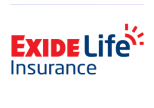Is PPF Better Than Life Insurance?
Table of Contents
Public Provident Fund is an initiative by the Government of India. It was launched by the National Savings Institute in 1968. The government backs this long term post office savings scheme, and hence the returns are guaranteed. The interest rate of PPF is announced by the Ministry of Finance every quarter. For the quarter, January 2021 – March 2021, the PPF rate is 7.1%, compounded annually. The investment up to Rs 1.5 lakhs per financial year is completely tax free in the hands of investors u/s 80C of the Income Tax Act, 1961. Moreover, the interest and maturity proceeds are also exempt from tax. Hence an investor investing in PPF for saving up for retirement need not worry about the tax.
Life Insurance Corporation LIC is a state owned insurance and investment company. In the year 1956, Life Insurance Corporation LIC was established after the Life Insurance of India Act was passed. One will receive a lump-sum payment upon maturity of the LIC policy, or unfortunate death of the policyholder. Life insurance policies best suit individuals who have dependents that rely on their income. Hence when a policyholder, unfortunately, passes away then the nominee will receive the insured amount. Hence LIC acts as a risk cover for the policy holder’s family. In case the policy matures before the death of the person, then the lump sum amount will be paid to the policyholder. The same can be used towards the retirement of the policyholder.
Features of Public Provident Fund (PPF)
Following are the features and benefits of Public Provident Fund:
1. Tenure
The tenure of a Public Provident Fund account is 15 years. Hence, the lock in period is also 15 years. Furthermore, the account can be extended by a block of five years. Also, the extension does not require any additional investments by the subscriber. Therefore, it is suitable for retirement planning.
2. Eligibility
All Indian citizens can invest in PPF. Also, one can open the PPF account in the name of a minor and the parent or guardian can operate it. However, Non Resident Indians and HUFs cannot invest in Public Provident Fund. Every investor can open only one public provident fund account. Also, the account cannot be held jointly. However, one can open an additional account on behalf of a minor.
3. Minimum and maximum investment amount
The minimum investment amount for a PPF scheme is INR 100. Also, the minimum deposit per annum is INR 500. On the other hand, the maximum deposit in a PPF account is Rs 1.5 lakhs p.a.
4. Deposit Frequency
The deposit frequency can be either once a year or a maximum of 12 instalments in a year. Also, it is necessary to make at least one deposit every year to keep the account active.
5. Risk
The Government of India backs the PPF scheme. Therefore, it is among the safest investment schemes available to individuals. The Public Provident Fund scheme offers guaranteed and risk-free returns.
6. Nomination And Loan
An individual can nominate a nominee either during the account opening or subsequently. Subscribers can avail a loan against their PPF deposits. However, one can take a loan only between the third and the fifth year of the account tenure. Furthermore, the loan amount cannot be more than 25% of the deposit amount made till the end of the second financial year.
7. Taxation
Public Provident Fund investments fall under the category of Exempt – Exempt – Exempt (EEE). In other words, the investment, interest earned, and redemptions are all tax exempted. Under Section 80C of the Income Tax Act, 1961, PPF investments up to Rs 1,50,000 in a year qualify for tax benefits.
Also read - 5 Retirement Mutual Fund SIPs To Buy In 2021
Features of a Life Insurance Policy
Following are the features of Life Insurance Policy:
1. Policy Holder
The policyholder is the one who pays the premiums for the life insurance policy. They also sign the life insurance contract with the company.
2. Premium
It is the amount that the policyholder pays the insurance company for covering their life.
3. Maturity
It is the time duration after which the policy term completes, and the life insurance contract ends.
4. Insured
The life of the policyholder is insured through life insurance. Upon the policyholder’s death, the insurance company is liable to pay the insured amount to the dependents.
5. Sum Assured
Sum assured is the total amount that the insurance company pays to the dependents on the event of death of the policyholder. The sum is paid in case any event occurs that is specified in the life insurance contract.
6. Policy Term
The policy term is the duration for which the insurance company provides life cover. Also, it is the period during which the contract is active. These terms are listed in the life insurance contract.
7. Nominee
The nominee is the person who will receive the predetermined compensation as part of the policy. The policyholder can nominate the name of the person while opening the scheme.
8. Claim
The nominees can file a claim to receive the predetermined payout amount on the event of death of the policyholder. The amount thus received from the policy acts as a risk cover.
LIC or PPF Which Is Better?
People often get confused between investment and insurance. Insurance is for risk protection, while investment is for a secured future. For any investor having good financial health is important. For good financial health, one needs to have an emergency fund for unexpected expenses, insurance for protection against unfortunate events, and investments for a secured future. Therefore, an investor must have insurance if they have dependents that rely on their income. There are many types of insurance policies in the market, like the term insurance policy, ULIPs, and endowment plans. However, it is advisable that an investor can take a term insurance policy and invest in PPF. It provides the safety of insurance as well as security of investment in the most cost-effective way.
Conclusion
There are insurance schemes that offer investment options as well, for example, ULIPs. However, they are on the higher end of the scale when it comes to expense ratio. Moreover, they have a lot of hidden charges. Hence it is suggested that individuals separate their investment and insurance needs and take a term policy while investing in PPF.
You may also like to read - All You Need to Know About a Term Insurance
Disclaimer: This article is issued in the general public interest and meant for general information purposes only. Readers are advised not to rely on the contents of the article as conclusive in nature and should research further or consult an expert in this regard.









































